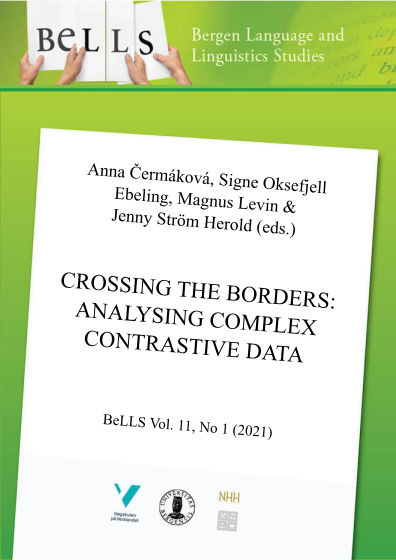Eyes and speech in English, Finnish and Czech children’s literature
DOI:
https://doi.org/10.15845/bells.v11i1.3444Abstract
This study explores cross-linguistically, in English, Czech and Finnish, eye-behaviour that occurs in children’s fiction in the vicinity of character speech. We explore how authentic eye behaviour, as an important part of non-verbal communication, is rendered in fictional worlds. While there are more similarities than differences across the languages in the characteristics and narrative functions of fictional eye-behaviour, the linguistic encoding differs substantially due to typological differences between the languages. The same semantic roles are often expressed by divergent syntactic means. The divergence is reflected primarily in the relative weight of different word-order principles, the different means of indicating simultaneity, as well as the role of inflection in Finnish and Czech.
Downloads
Published
How to Cite
Issue
Section
License
Copyright (c) 2021 Anna Čermáková, Markéta Malá

This work is licensed under a Creative Commons Attribution-NonCommercial 4.0 International License.


